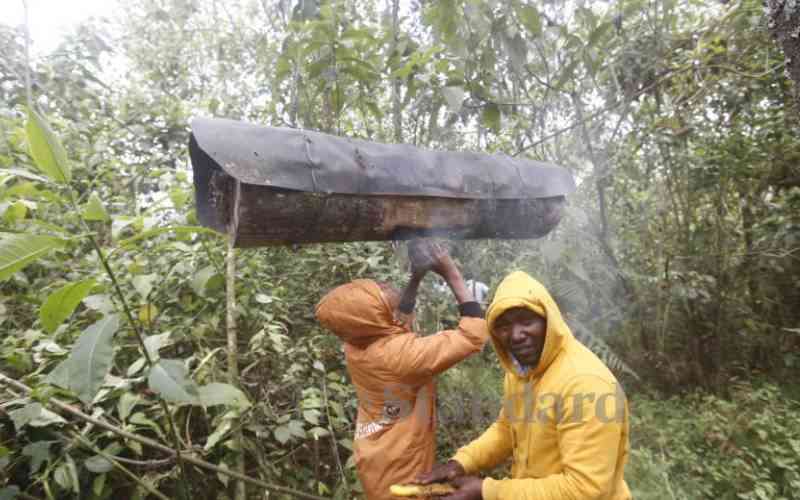×
The Standard e-Paper
Kenya’s Boldest Voice

The gentle mid-morning sunlight filters through branches of African olive trees at Mau Eburu Forest, with a rich earthy smell seeping from heaps of leaf litter.
Maseto Kosen, 46, accompanied by his 16-year-old son Daniel Maseto, leads us deep through the thick forest to one of his beehives, which he says is ready for harvesting.